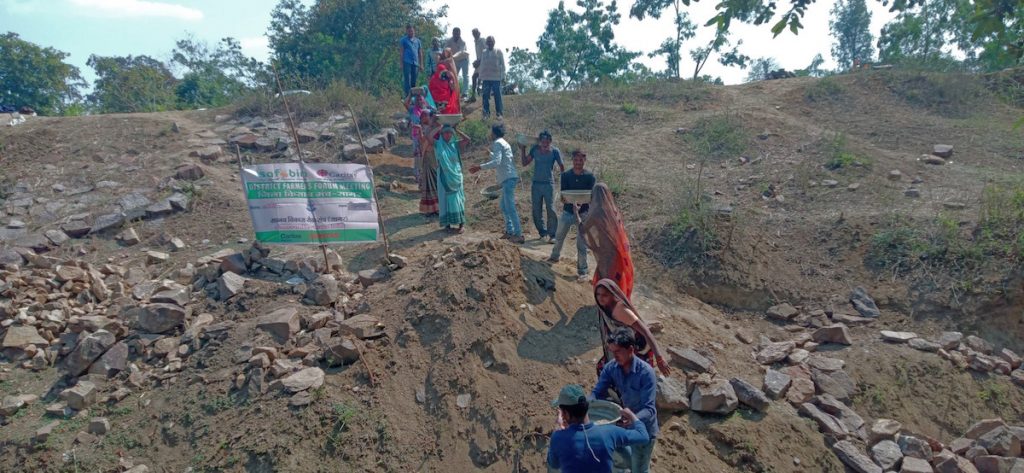Shahgarh is a remote village in the central Indian state of Madya Pradesh. It’s a land of normally lush green trees, vast paddy fields and tragic tales of debt-ridden farmers who have killed themselves due to their financial burdens.
A tree located in a corner of the hamlet has become a horrible relic of sorts for locals who recall how a farmer hanged himself from one of its branches last year. They said that his body was dangling there for hours before his son managed to get it down.
A week before the suicide, the farmer received a bank notice telling him to repay his loan while warning him that if he failed to do so the land would be confiscated.
That night the farmer resolved to repay the debt by going to India’s capital New Delhi to work as a laborer but within 24 hours he changed his plan and instead hung himself.
Manga Ram Yadav, a farmer who grows soya bean in Shahgarh, said the deceased farmer had a loan that included interest that had become impossible to pay back. “Even if he would have worked his entire life, he couldn’t have repaid one-tenth of the total amount,” Yadav told LiCAS.news.
Yadav said farmers in the region had faced a range of challenges that included water shortages due to untimely rainfall and the late arrival of monsoons.
The harvest, Yadav said, was small and no amount of work could have changed the situation.
“Many of us were migrating to other cities and towns to work as daily wage laborers so to save our families from starvation,” he said. “Those who had loans sold their land and those without loans deserted farming and were doing menial jobs for sustenance.”
Another farmer named Mohan Lal sold almost half of his land to clear his bank loan. Lal said that nature had been unkind to the state’s farmers, and due to drought-like situation; the otherwise fertile lands had become the opposite.
“The scarcity of water vastly limited our harvest. What we were earning did not even cover the basic farming costs. We were on the verge of leaving farming forever,” he said.
But things changed for the farmers when the social work wing of the Diocese of Jabalpur, Madhya Pradesh, in a partnership with Caritas from Switzerland, Austria, and India offered them training last year. The diocese and the Caritas groups launched the Smallholder Adaptive Farming and Biodiversity Network program in the village where experts trained the farmers in various innovative and scientific methods of soil and water conservation.
Yadav was one of the hundreds of farmers who attended training last September where he was taught olla irrigation system methods. This method includes burying a clay pot with only the opening on top visible above the soil surface. The pot is then filled with water and the porous walls of the olla allows the water to dissipate into the soil as needed. This method keeps the soil hydrated and makes it fertile for the crops to grow amid water scarcity. Other methods taught were soil mulching and mixed cropping methods.
“I had heard about such methods before but didn’t know how to put them to use. The training instilled in us new hope and encouraged farmers not to abandon farming,” Yadav said.

The second part of the training included water conservation methods like rainwater harvesting, construction of dams and bunds to save the monsoon water for reuse, and methods to irrigate the fields with saved rainwater.
Lal, who grows maize on his 5-acres, said the training — especially on the construction of bunds — is changing the farmers’ lives for the better.
“This year, we have already witnessed a growth in our yields,” Lal said, adding that the water management techniques they learnt had allowed them to better irrigate their fields.
Rakesh Kumar, a farmer who was in the first batch of training, said the methods taught were proving profitable.
“The mixed crop method worked wonders for me. I used to rely on a soy-bean crop alone,” Kumar said. “But now, I grow many other vegetables in my field at the same time. I am amazed to find that the soil hasn’t lost its fertility and the profit also has doubled.”
Before the course, Kumar said he was going to sell his land.
“Now, that looks a thing of past,” he added.






